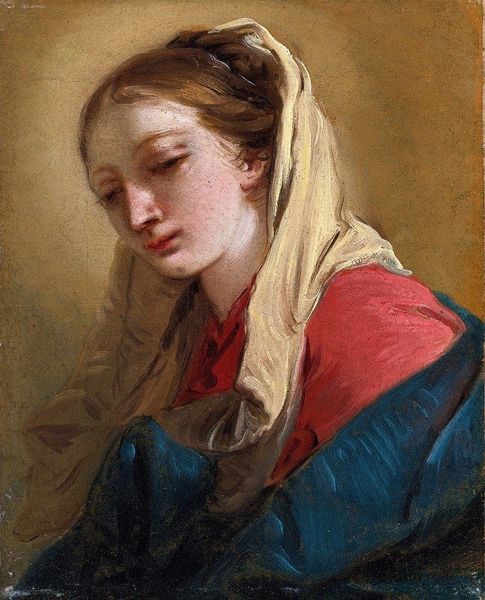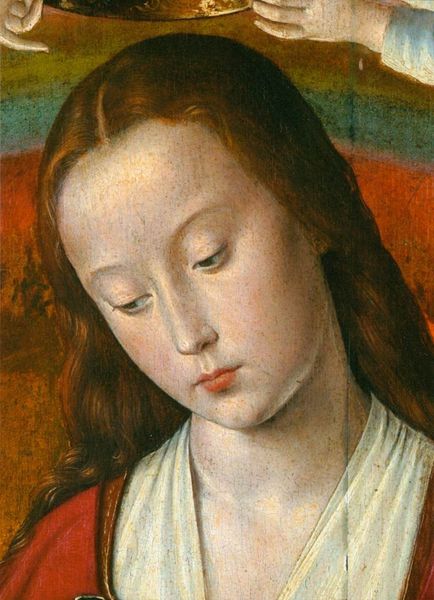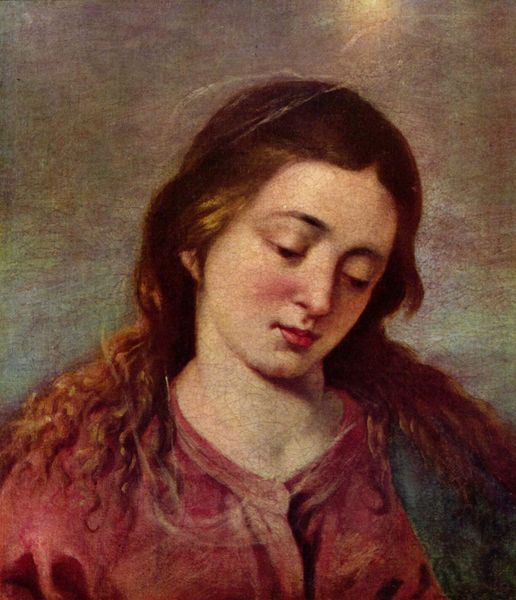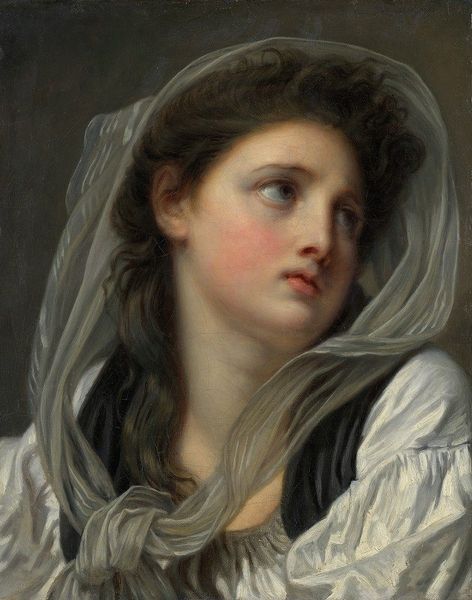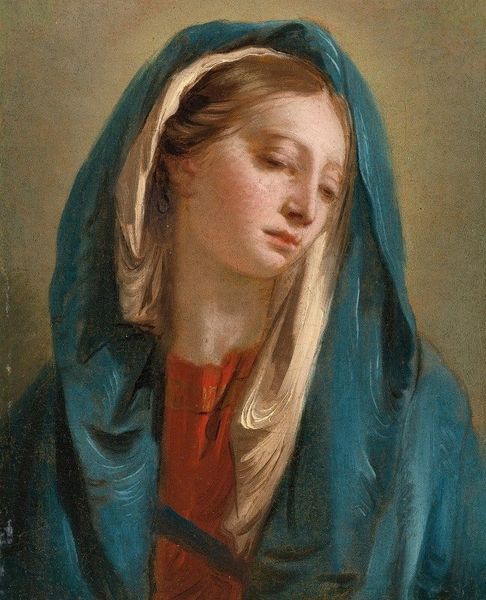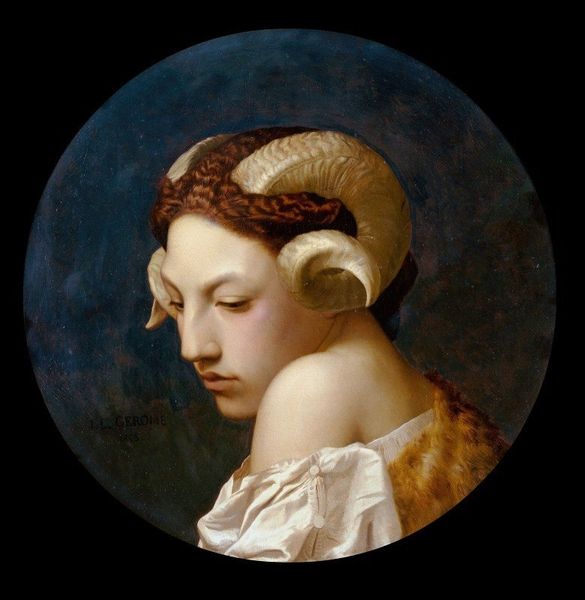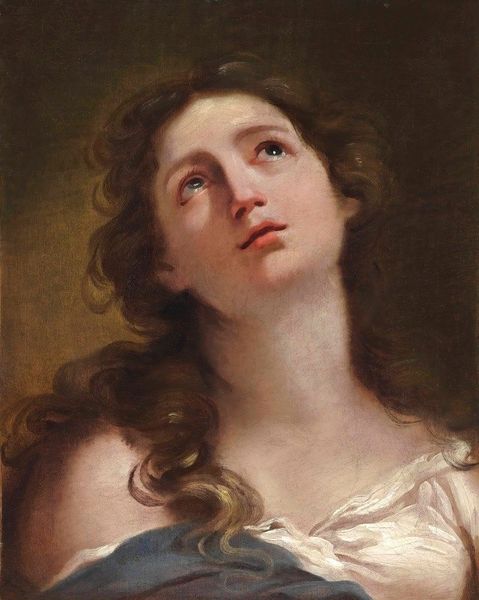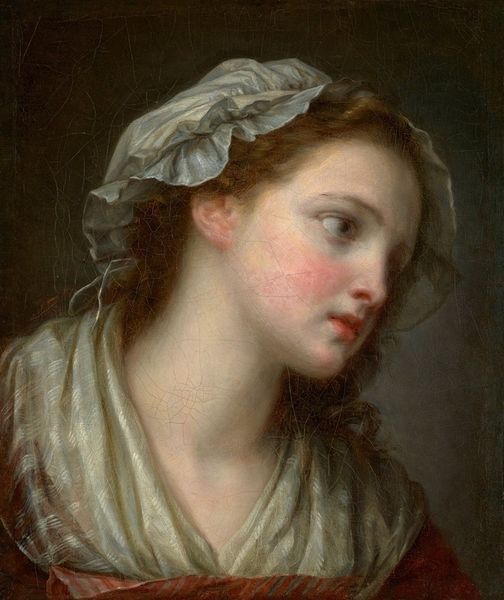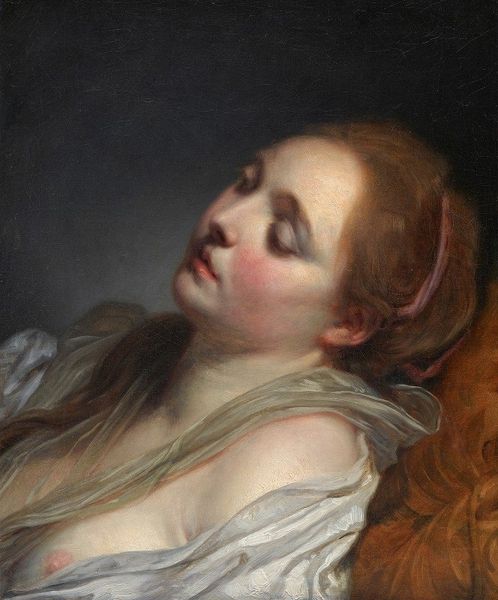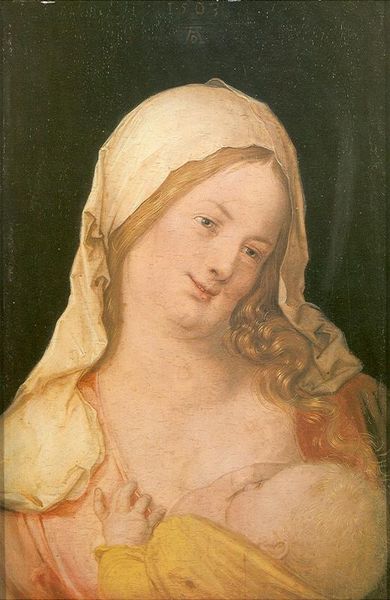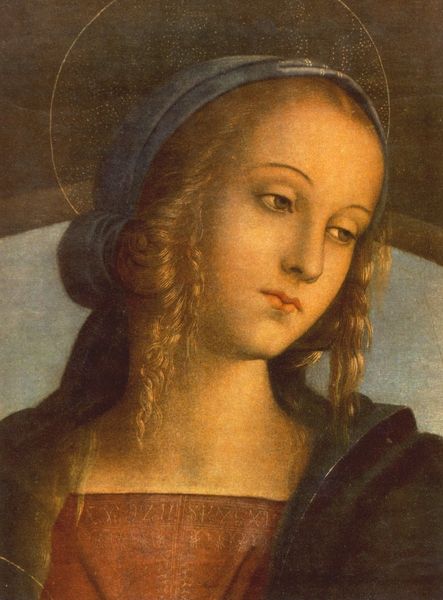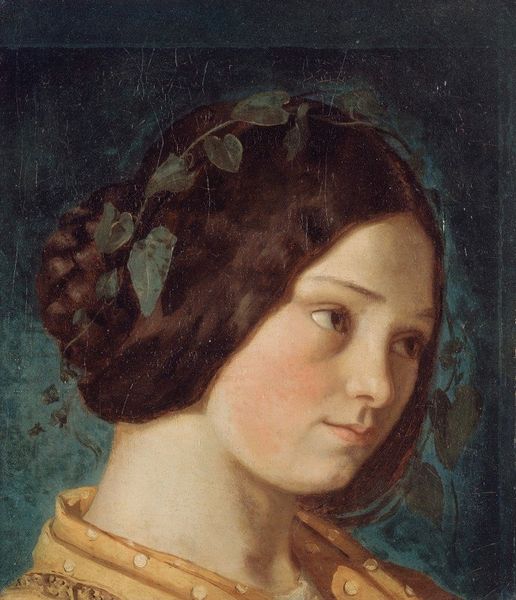
painting, watercolor
#
portrait
#
facial expression drawing
#
character portrait
#
portrait image
#
painting
#
watercolor
#
portrait reference
#
portrait head and shoulder
#
romanticism
#
animal drawing portrait
#
portrait drawing
#
facial study
#
facial portrait
#
academic-art
#
miniature
#
digital portrait
Copyright: Public Domain: Artvee
Curator: Let's consider this work, “Madonna,” by Johann Peter Krafft. This watercolor painting presents a compelling character portrait. Editor: There's a serene melancholy about her, isn't there? The downward gaze, the soft lighting… it's immediately affecting. It has to be linked with the traditional representations of sorrowful female figures of the Romantic Era, maybe even hinting at a kind of resistance or suffering. Curator: Indeed. The formal construction supports this reading. The use of watercolor lends the image a certain softness, and her skin looks translucent, giving an ethereal quality. The composition leads the eye downwards, emphasizing her bowed head. Editor: Which is powerful, given the historical context of idealized female figures in art. Here, she's not presented as an untouchable goddess, but rather a woman, thoughtful or troubled, with whom viewers, especially women, can find resonance. Curator: Notice the careful rendering of the hair, cascading down in perfectly controlled waves. Krafft’s mastery is evident in the textures and the subtle interplay of light. I believe Krafft understood the nuances of Romanticism as he creates an aura of idealized spirituality around the figure by means of compositional and chromatic harmonies. Editor: Right. Considering societal expectations, representing the subject with downcast eyes could be interpreted as the embodiment of humility. It also raises questions of agency and self-representation during the Romantic period. What choices, or lack thereof, did women artists have to express more overt statements through art? Curator: A poignant reading. It underscores how formal elements like composition, tone, and rendering all function together, reinforcing the thematic intention. This portrait invites extended analysis of color relationships alone, to speak of the artistic craft that lies behind it. Editor: And reminds us of the broader societal and political currents at play during its creation. Both aesthetics and activism can shape a fuller comprehension. Curator: A most agreeable insight, inviting continued dialogue and discovery. Editor: Indeed. Thank you.
Comments
No comments
Be the first to comment and join the conversation on the ultimate creative platform.
